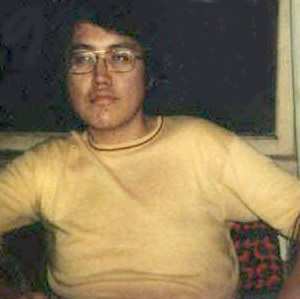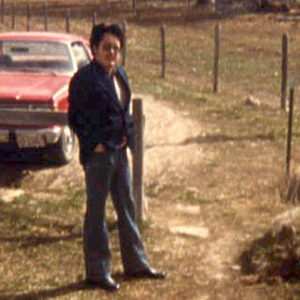Make a Joyful Noise
 Okay, well, some of the ones we do are of course the Hot Dance or the War Dance, the Grass Dance. Contemporary people call it Powwow and also we have Sun Dance. Some tribes do that. That’s what we call it. That’s mostly done in the summertime. It’s a dance of sacrifice. They don’t drink or eat for three days, and they fast. So that’s more of religious dance.
Okay, well, some of the ones we do are of course the Hot Dance or the War Dance, the Grass Dance. Contemporary people call it Powwow and also we have Sun Dance. Some tribes do that. That’s what we call it. That’s mostly done in the summertime. It’s a dance of sacrifice. They don’t drink or eat for three days, and they fast. So that’s more of religious dance.
There’s of course, Peyote. Some of the tribal members do peyote. They believe in that. They sing Peyote. They go to peyote meetings. Sometimes they’ll have them on weekends. Sometimes somebody will sponsor one, what they call a “tea” at their house. They’ll sing all night. They’ll start like oh, maybe nine, ten o’clock. They’ll go until morning. Then they’ll take turns singing peyote songs. Then again, that’s just like some of the tribes down around Oklahoma, the Comanche, Cheyennes, the Navajo, Kiowa, Apache. So we more or less sing some of the same songs that they do. Of course the Crow, we have our own songs too.
When they hit the drum, they acknowledge the mountains. There’s a certain point where they hit the drum and everybody will acknowledge the mountains. Then they will acknowledge the eagle and we’re thanking the Creator for giving us the mountains, the water that preserves life, and to the eagle, that he watches over us, the Great Spirit. Like I said also, of course you know that when we’re dancing, see, the drumstick when it hits the drum, that represents thunder. See when you hit the drum it represents thunder. So then it says that when we are told that when you hit the drum people that are sick become well, they quit being sick because we’re joyous. We’re happy to be alive, you know.
They tell us to stomp on Mother Earth. Hit, stomp on Mother Earth so that when you hit that drum you’re glad to be alive. Tell Mother Earth that you’re glad to be alive. So that’s what we are told. We have several mothers. We have our birth mother. We want to keep her forever, but she’s only with us for a while. We have the lodge, but Mother Earth will never leave you. We are told that Mother Earth will always be there. So you stomp on Mother Earth and you’re joyous. You make a joyful noise, happy that you’re alive. So that’s the reason and then when we hit the drum and we’re just glad to be alive. So we’re celebrating.
Lewis Walks Over Ice
 Lewis Walks Over Ice is a member of the Crow Tribe of Montana and resides in Lodgegrass. His mother’s family descends from Hawk With a Yellow Tail. Robert Yellow Tail, a former Crow tribal chairman, was the first Crow Indian to be superintendent of his own agency in the early 1930s, the first Crow Indian to graduate from high school, and the first to get a college degree. His Grandfather, Hillside, was second in command next to the chief of all chiefs, Plenty Coup when the Crow signed a friendship treaty with the United States. The Crow tribe originated in the Great Lakes area. They were pushed westward by the Sioux Nation and landed in present-day North Dakota. The original reservation covered 39 million acres and decreased in time to a little over one million acres. Today, tribal members own half the acreage and the other half is leased out to non-Indians such as farmers and ranchers.
Lewis Walks Over Ice is a member of the Crow Tribe of Montana and resides in Lodgegrass. His mother’s family descends from Hawk With a Yellow Tail. Robert Yellow Tail, a former Crow tribal chairman, was the first Crow Indian to be superintendent of his own agency in the early 1930s, the first Crow Indian to graduate from high school, and the first to get a college degree. His Grandfather, Hillside, was second in command next to the chief of all chiefs, Plenty Coup when the Crow signed a friendship treaty with the United States. The Crow tribe originated in the Great Lakes area. They were pushed westward by the Sioux Nation and landed in present-day North Dakota. The original reservation covered 39 million acres and decreased in time to a little over one million acres. Today, tribal members own half the acreage and the other half is leased out to non-Indians such as farmers and ranchers.
Lewis is the lead singer for the drum group the Nighthawk Singers. He is the keeper of the drum stick for the hot dance. Lewis can discuss the history of tribal dance and music that includes war dance chiefs, dog head feast, horsewhip carrier, sundance, push dance/owl dance, and the hot dance. The hot dance originated with the Omaha, was given to the Santee Sioux who gave it to the Hidatsa, who in turn gave it to the Crow. It was so-called because hot food was served. The dance is done during the daytime and only the men can participate. He and his drum group are featured in Tribal Rhythms: Program Six on Wisdom of the Elders: Series Two.
Lewis is also a tribal historian. His name originates from an incident that took place over a hundred years ago when the Sioux and the Crow were fighting. The Crows were afraid to walk over a frozen river so Lame Deer walked across the ice. The elders told Lame Deer that if a male child was born, he would be named after this deed. When Lewis’ grandfather was born, he was then named Walks Over Ice. He was invited to speak about the clan system at the Conference of Native Americans in Washington D.C. Lewis gave classes at Little Big Horn College covering Crow Indian music, the origins of the war dance, how the Crow dress, the clan system, and the Crow culture. Lewis discusses the importance of preserving sacred landmarks and discusses examples of monuments that exist in Montana. Indian caves have drawings that depict native culture from thousands of years ago, including buffalo, people chasing buffalo on horseback, and skirmishes with other tribes.
Lewis is also a storyteller. Stories were handed down by word of mouth, from grandfather to father to son. His father was his mentor and very knowledgeable in these aspects. Lewis gears his legend, creation, and animal stories to various age level groups and speaks at high schools and Boy Scout groups at their invitation.
Lewis Walks Over Ice
PO Box 386
Lodge Grass, MT 59050
(406) 639-2640
mrteardrop@hotmail.com
